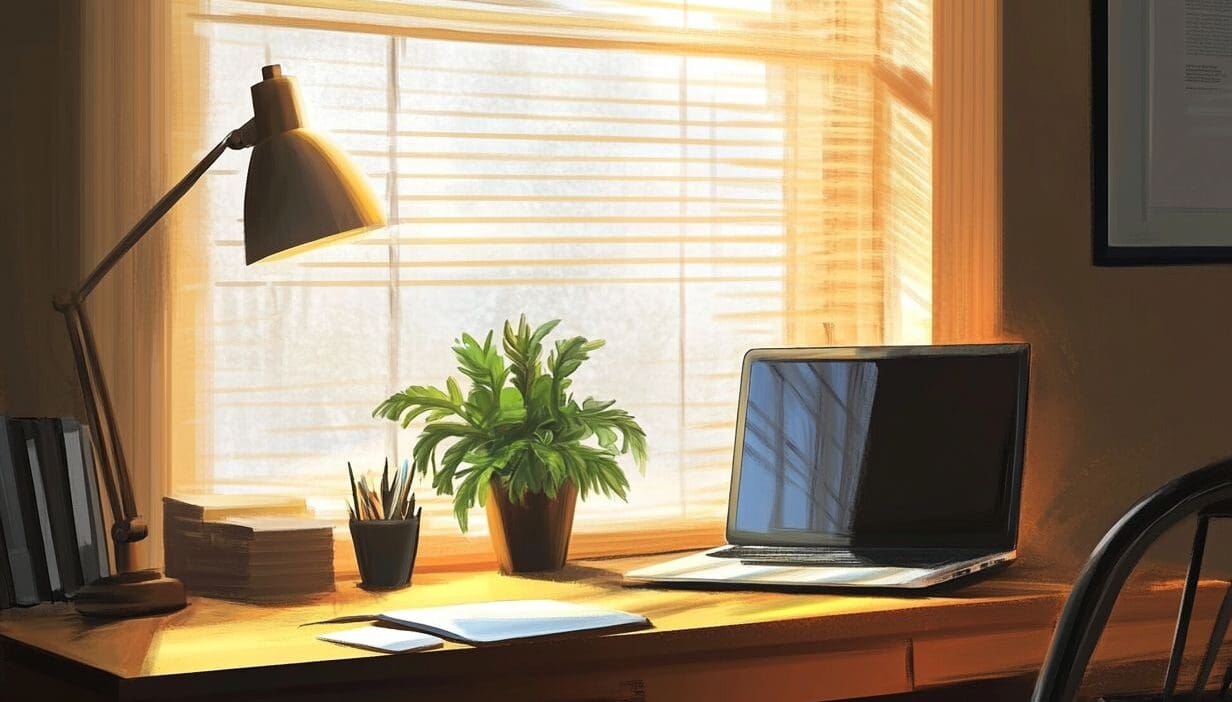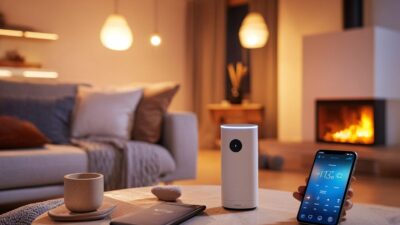In today’s rapidly evolving society, distractions are ubiquitous, making it increasingly challenging to maintain focus and enhance productivity through effective time management. The continual influx of notifications, pervasive background noise, and the inherent chaos of family life can adversely affect both mental health and overall efficiency. This article examines the significance of establishing a distraction-free zone within the home, identifies common sources of distractions, and provides practical recommendations for creating and sustaining an environment conducive to focus and well-being. By implementing straightforward adjustments, individuals can significantly enhance productivity and achieve a more tranquil state of mind.
Key Takeaways:
The Importance of a Distraction-Free Zone
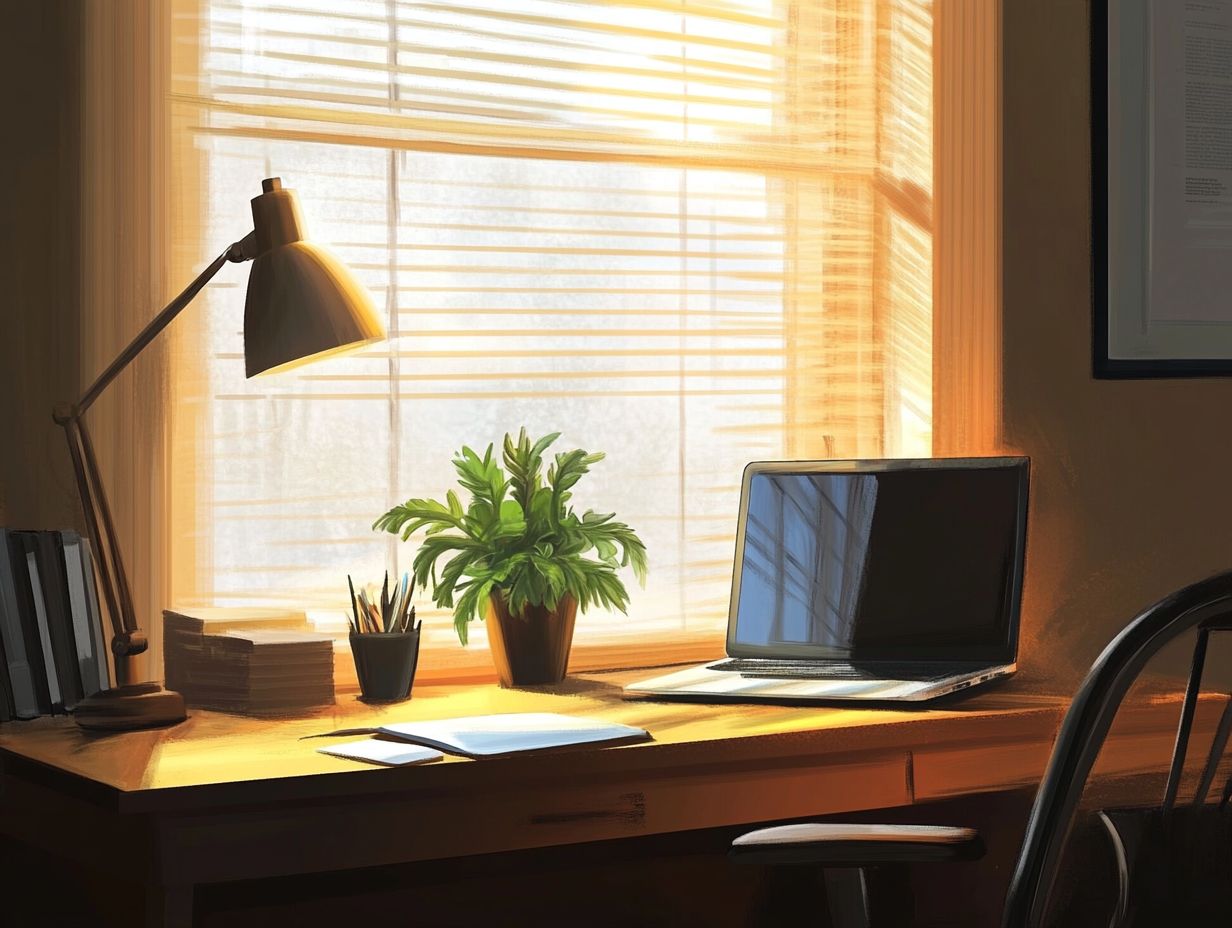
In an increasingly digital world shaped by the COVID-19 pandemic, the establishment of a distraction-free environment has become essential for maintaining high levels of productivity while working from home.
A designated workspace enables individuals to physically separate their professional and personal lives, thereby reducing distractions, enhancing focus, and improving workspace lighting.
Furthermore, by implementing effective productivity strategies, one can mitigate common distractions that hinder work performance. This is particularly vital in a remote work setting, where the boundaries between professional and personal responsibilities often blur, potentially leading to declines in workplace productivity and communication challenges. As noted in a recent publication by The New York Times, understanding the effects of remote work has become crucial in navigating these challenges.
Effects of Distractions on Productivity and Mental Health
Distractions can have a significant impact on productivity and mental health, leading to increased stress and diminished efficiency in work habits and workspace design.
In today’s fast-paced environment, individuals face numerous digital and physical distractions that make it challenging to maintain focus on their tasks. Constant notifications from smartphones and social media, along with a disorganized arrangement of papers and items on a desk, can create a chaotic atmosphere that disrupts concentration. The importance of understanding how digital distractions affect our health is highlighted by Mass General’s exploration of digital distraction and its impact on your health, a subtle authority in the field.
These distractions not only impede productivity but also contribute to elevated levels of stress and anxiety, adversely affecting overall mental well-being.
Implementing stress reduction techniques, such as mindfulness practices or organizing one’s workspace, can facilitate a more structured approach to work, ultimately promoting a healthier and more productive work environment.
Identifying Distractions in Your Home
Identifying distractions within the home environment is essential for creating an effective workspace, particularly for individuals working remotely.
Common sources of distractions may include digital interruptions, such as frequent notifications from platforms like Zoom or emails, as well as physical disturbances, such as noise pollution from the external environment. Recognizing these challenges enables individuals to establish an organizational system that reduces interruptions and enhances focus. For context, a study published by Taylor & Francis explores the impact of these distractions on home-work environments.
This can be achieved through strategic workspace design, incorporating elements such as the utilization of natural light and soundproofing solutions.
Common Sources of Distractions
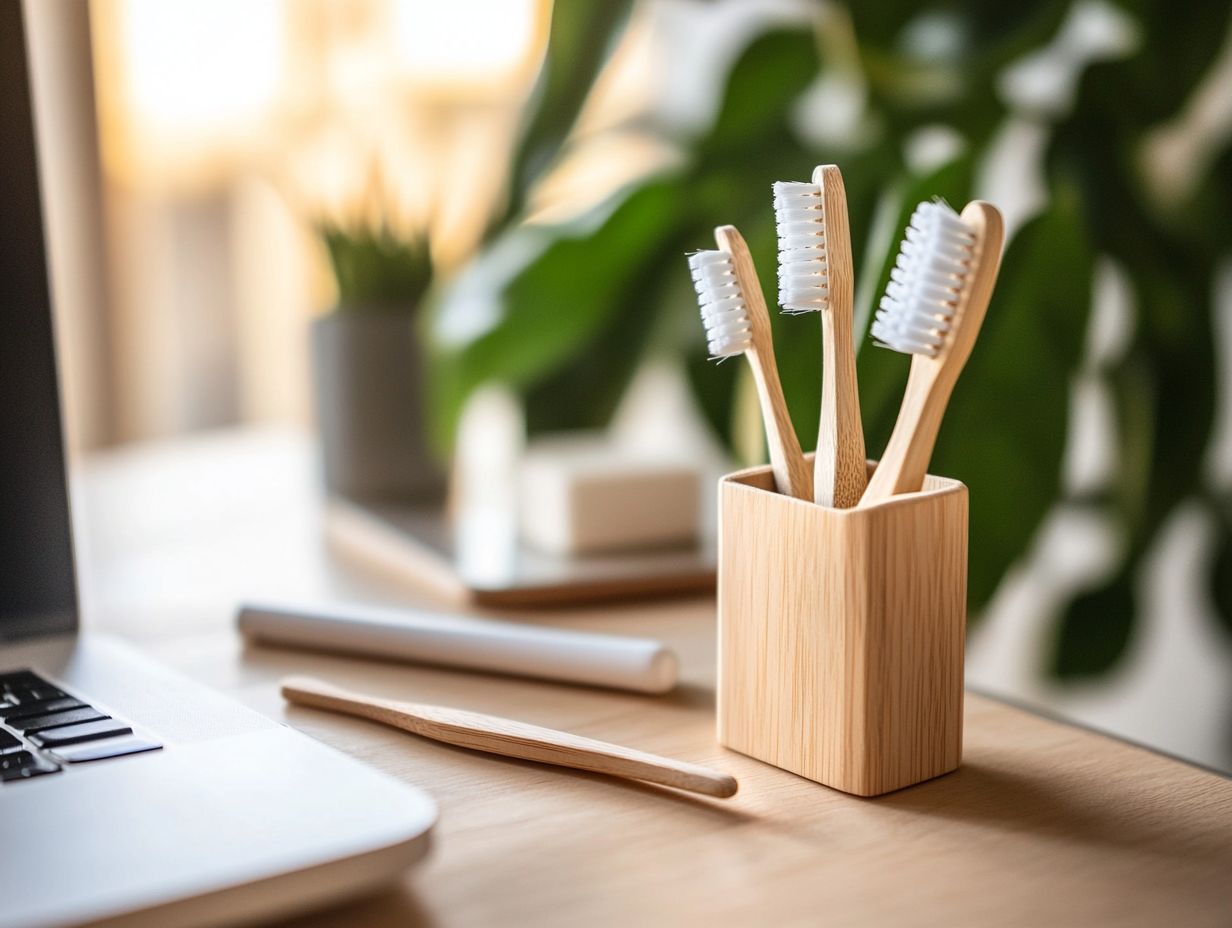
Common sources of distractions in a home office primarily encompass digital distractions, such as social media notifications, email alerts, and various online temptations that can interrupt workflow.
However, it is important to recognize that physical distractions can be equally detrimental to productivity. Noisy neighbors can create an uninviting atmosphere, making concentration exceedingly difficult. Additionally, pets may vie for attention or create disruptions that interfere with the work process. Family members may also inadvertently fail to recognize the need for a quiet and respectful environment during work hours.
Moreover, the lighting setup in a workspace significantly impacts the ability to maintain focus; excessively harsh or dim lighting can contribute to fatigue and strain, ultimately leading to increased distraction.
By effectively managing these various elements, individuals can foster a more productive work environment.
Creating Your Distraction-Free Zone
Establishing a distraction-free zone necessitates meticulous planning and consideration of various factors that contribute to an effective home office setup.
It begins with the creation of a designated workspace, ideally situated in a quiet room away from common household distractions, allowing for enhanced focus on tasks.
Implementing soundproofing measures, such as acoustic panels or noise-canceling headphones, effectively mitigates noise pollution, while the use of ergonomic furniture, like a comfortable office chair, ensures comfort during extended work hours.
Furthermore, a clutter-free environment, bolstered by a robust organization system, can significantly improve concentration and overall work efficiency.
Designating a Space
Designating a specific area within one’s home for work is essential for fostering a productive environment, ensuring a clear physical separation from living spaces.
Selecting the optimal location for this workspace requires careful consideration of various factors, including natural light and ambient noise levels. A well-lit area with large windows can significantly enhance mood and stimulate creativity, while soft curtains may be employed to mitigate glare.
Incorporating personal elements, such as inspiring artwork or plants, can further enrich the atmosphere, making it more inviting. It is also imperative to prioritize ergonomic furniture; an adjustable chair and desk can promote proper posture and minimize discomfort during extended periods of work.
Additionally, utilizing various lighting options, such as desk lamps with warm hues, can enhance focus and create a cozy workspace ambiance conducive to productivity.
Eliminating Distractions

Eliminating distractions is essential for maintaining productivity, especially in a work-from-home environment where digital distractions are prevalent.
To achieve this, individuals can implement various practical strategies designed to create a more focused workspace.
- For example, employing website blockers can effectively limit access to distracting websites during work hours, thereby facilitating deeper concentration on tasks.
- Additionally, setting phone notifications to ‘Do Not Disturb’ can significantly mitigate interruptions.
Establishing specific work hours reinforces the boundaries between professional and personal life, ensuring that focus remains intact. Furthermore, incorporating efficient task management techniques, such as prioritizing daily activities and utilizing to-do lists, supports the development of an environment conducive to productivity.
Tips for Maintaining a Distraction-Free Zone
Establishing a distraction-free environment necessitates a deliberate effort to set boundaries and implement routines that enhance focus and productivity.
Establishing Boundaries
Establishing boundaries is essential for minimizing distractions and ensuring that others respect one’s workspace and designated work hours.
By clearly communicating these limits, individuals can cultivate a more productive environment, thereby reducing the disruptions that frequently occur in shared living situations. It is vital for individuals to designate a specific area within the home as their workspace, which signals to others that this is a zone designated for focused activity.
Additionally, setting specific hours during which one is available or occupied can help housemates and family members comprehend when it is appropriate to engage or to allow for uninterrupted work time.
Engaging in open discussions regarding these boundaries can foster mutual understanding, facilitating a more harmonious coexistence during work hours.
Creating a Routine
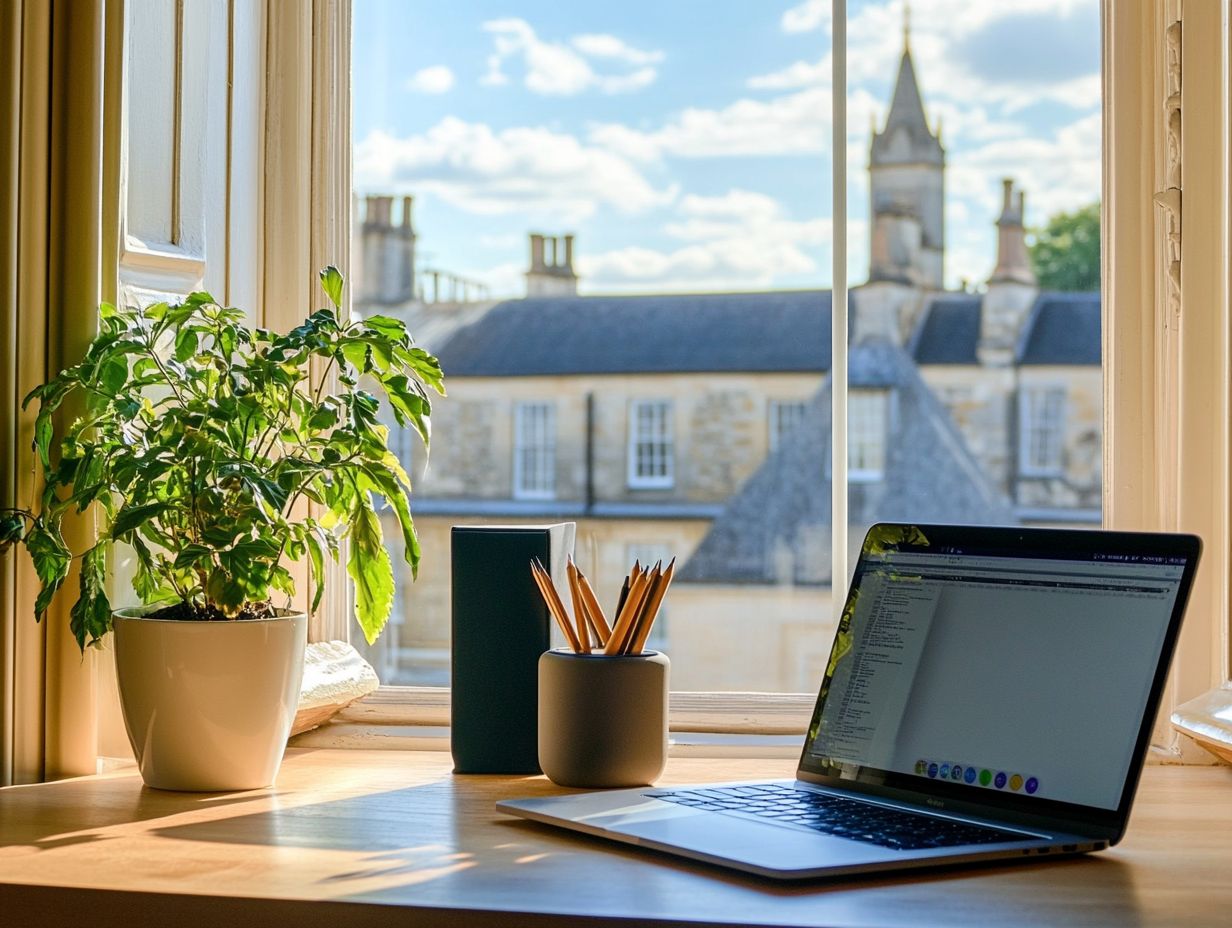
Establishing a daily routine is instrumental in fostering positive work habits that enhance focus and minimize distractions.
By implementing specific start and end times for work, individuals can delineate clear boundaries that separate professional responsibilities from personal time. This structure not only cultivates a sense of discipline but also promotes a healthy work-life balance.
Incorporating scheduled mental breaks throughout the day facilitates mental rejuvenation, thereby preventing burnout and supporting sustained concentration during productive periods.
Furthermore, adopting consistent task management strategies allows individuals to prioritize effectively, enabling them to address important activities efficiently and alleviating the overwhelming feeling that often accompanies a disorganized workload.
Ultimately, the establishment of such a routine is essential for optimizing overall productivity and achieving personal goals.
Dealing with Unexpected Distractions and Stress Reduction
Effectively managing unexpected distractions necessitates the implementation of strategies aimed at stress reduction and the maintenance of focus during interruptions.
One effective approach is to take a brief mental break, providing an opportunity to regroup and re-establish concentration. Mindfulness practices, such as deep breathing exercises or short meditation sessions, can also serve as valuable tools to alleviate stress and enhance mental clarity.
Utilizing efficient task management techniques, such as the Pomodoro Technique and digital organization, can aid in structuring work sessions to minimize disruptions. By anticipating interruptions and formulating a proactive plan, individuals can navigate audio distractions with greater ease, ensuring that productivity remains consistent without becoming sidetracked or overwhelmed.
Benefits of a Distraction-Free Zone for a Healthy Workspace
The advantages of establishing a distraction-free environment extend beyond mere productivity; they substantially improve focus, mental well-being, and overall job satisfaction, especially when working from home.
Improved Focus and Productivity
A distraction-free environment significantly enhances focus, leading to improved productivity and more effective work habits, which can be boosted further by incorporating productivity tips.
When individuals establish a workspace that minimizes interruptions, they are better positioned to approach tasks with clarity and intent. For example, an organized desk facilitates quick access to essential tools and materials, thereby considerably reducing the time spent searching for items and promoting better workspace organization.
Implementing strategies such as silencing notifications and utilizing time management techniques and workspace personalization can help sustain a consistent flow of concentration. This deliberate arrangement cultivates an environment conducive to creativity, promoting a more engaged approach to work.
Ultimately, as distractions decrease, the capacity to immerse oneself in projects increases, resulting in higher quality outcomes and greater efficiency, especially within a well-designed study space.
Better Mental and Emotional Well-being through Ergonomics and Yoga
Establishing a distraction-free environment is essential for promoting better mental and emotional well-being, which is crucial for achieving sustained productivity in an effective workspace location.
By minimizing interruptions and extraneous stimuli, individuals typically experience a significant reduction in anxiety and stress levels, which can be further aided by using essential oils and good office decor.
This tranquil setting enables them to fully engage with their tasks, resulting in enhanced focus and improved performance.
Implementing productivity strategies, such as time-blocking and scheduled breaks, further enhances this conducive atmosphere, fostering a healthier work-life balance, especially when working on online learning or during COVID-19.
Ultimately, by adopting a well-organized environment, individuals not only address their responsibilities with greater efficiency but also create a space that supports their mental health and overall well-being, enhanced by a coffee corner and effective seating comfort.
